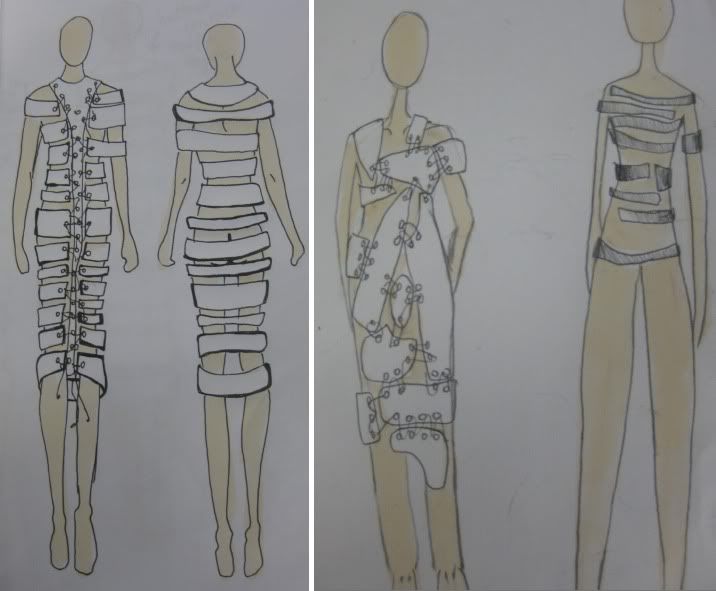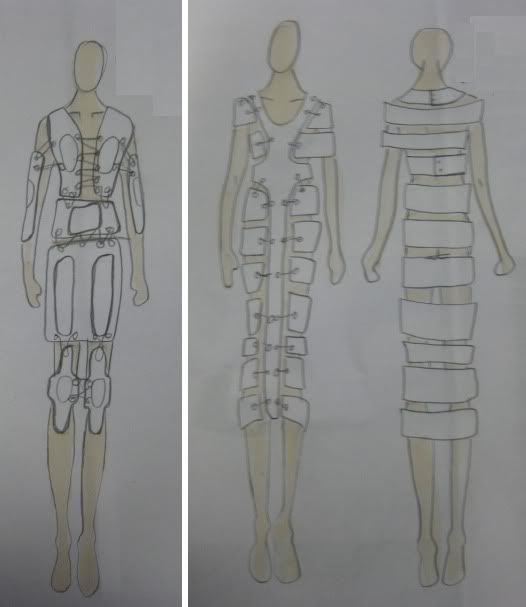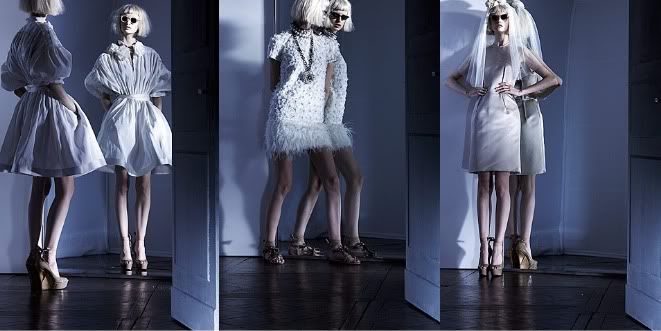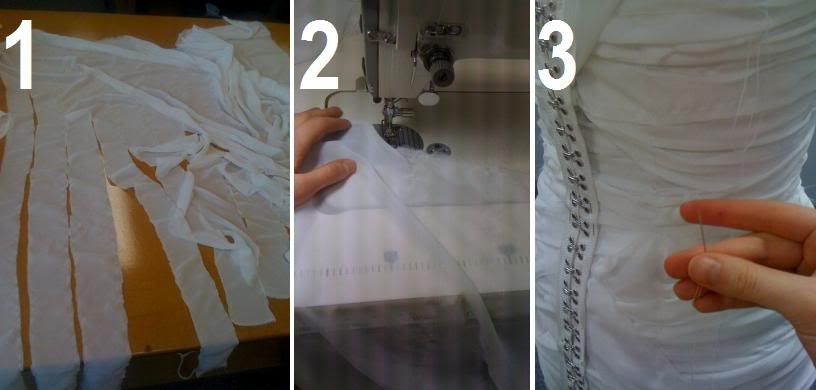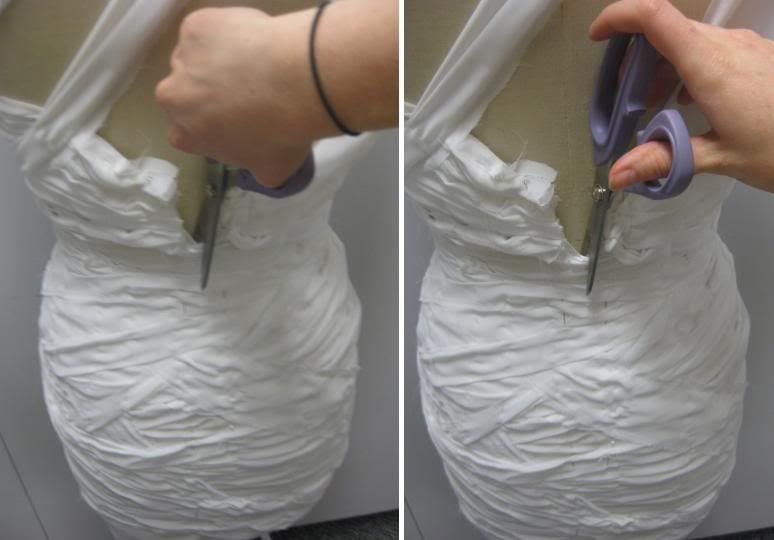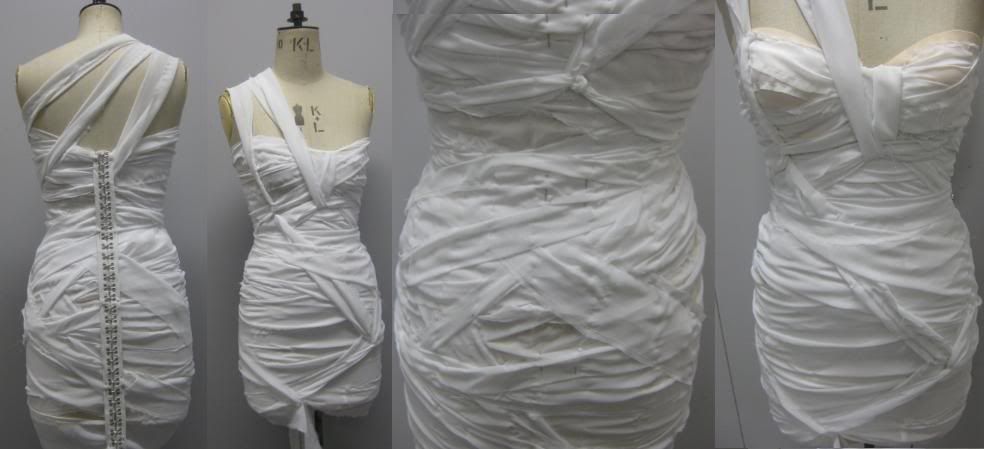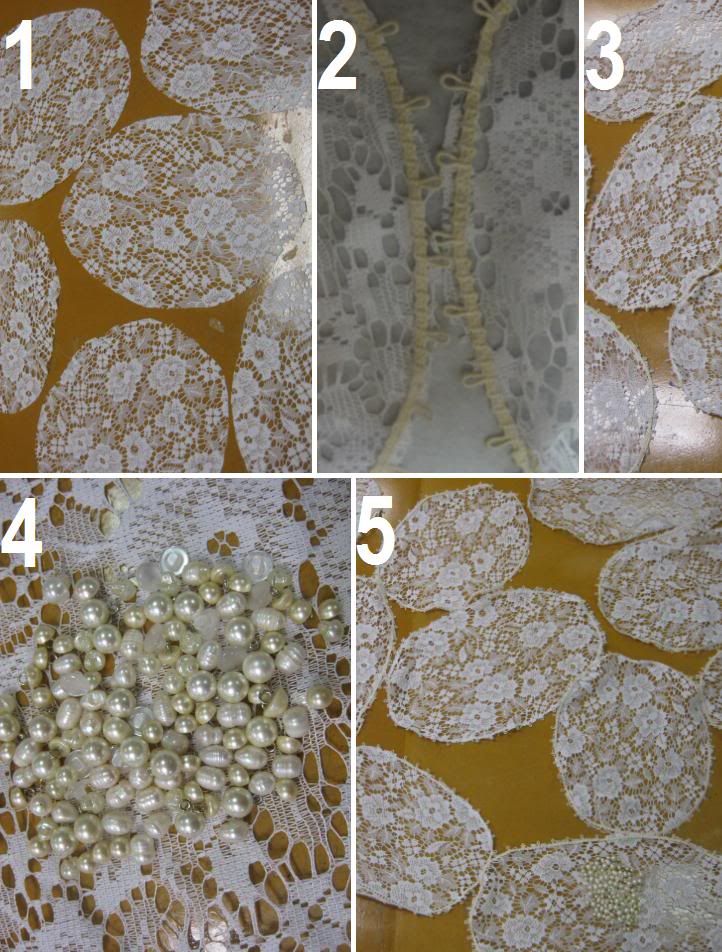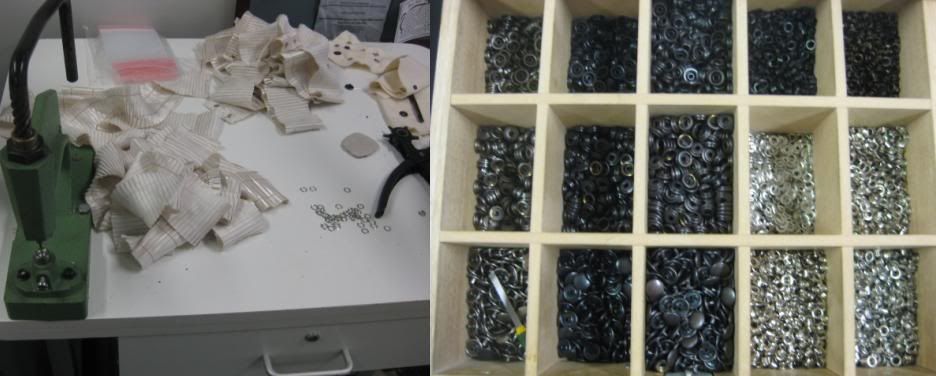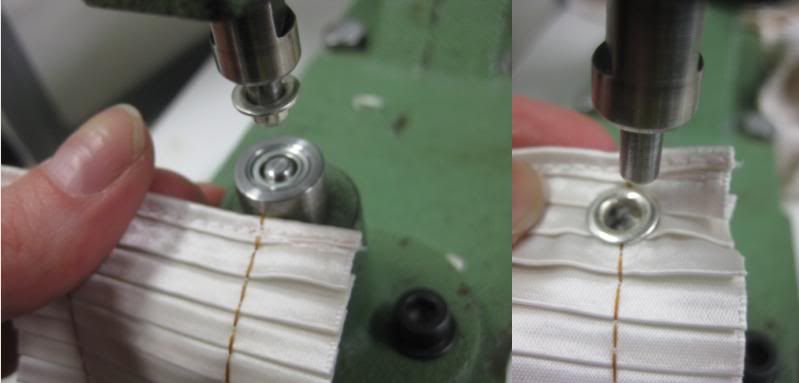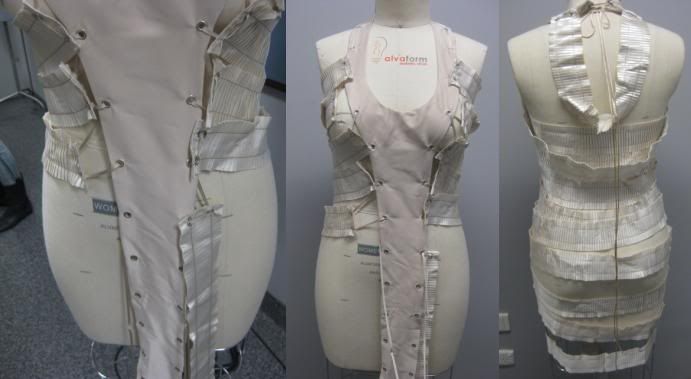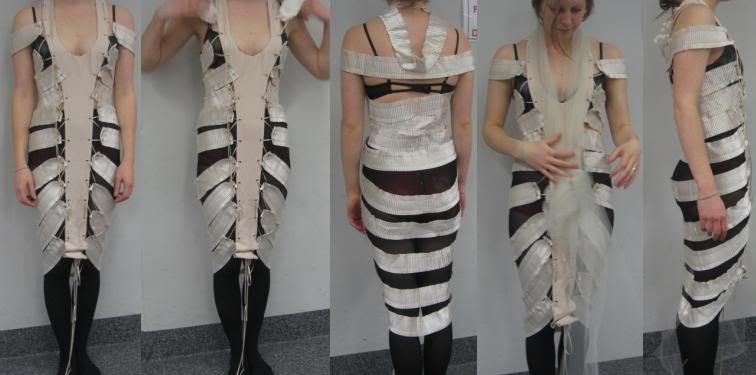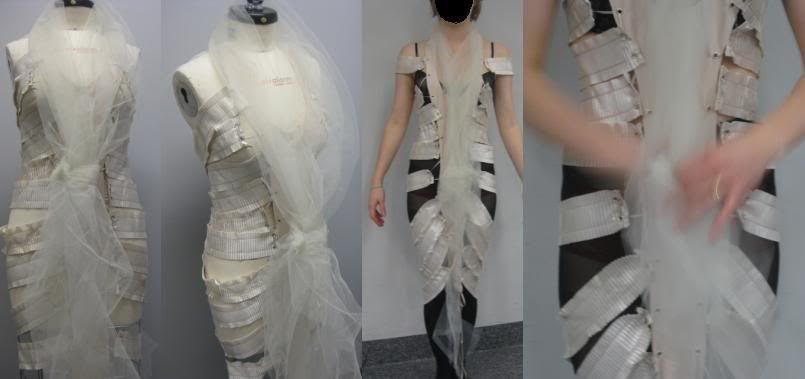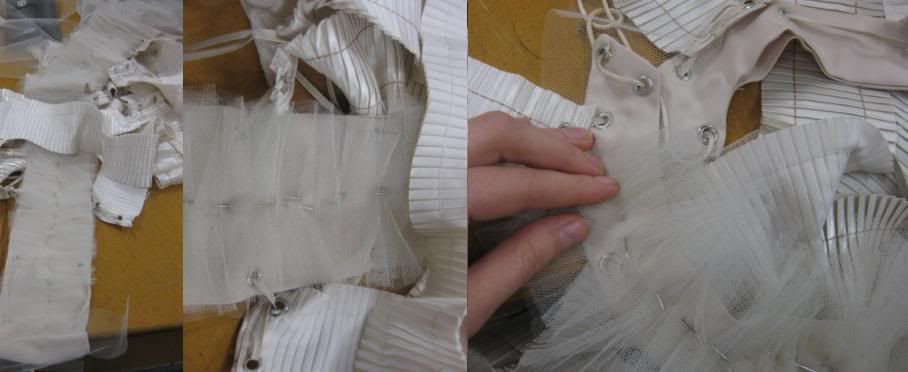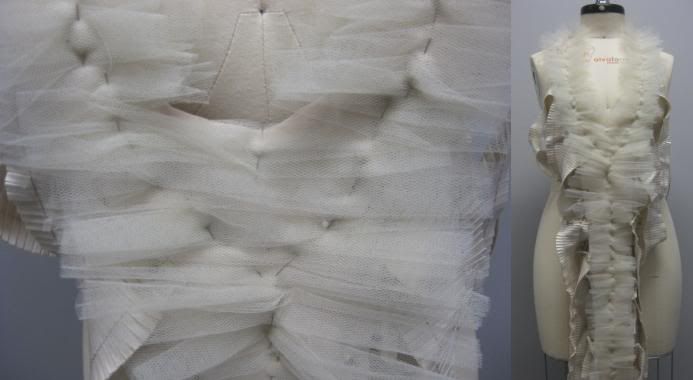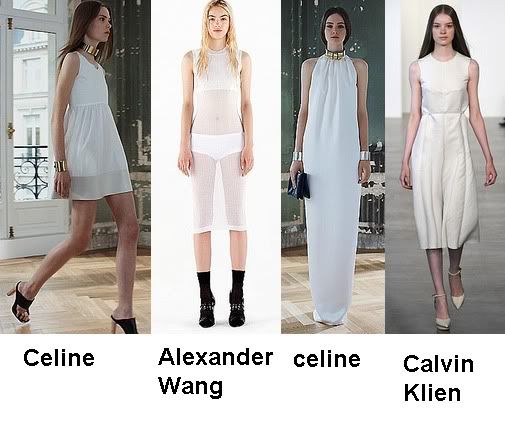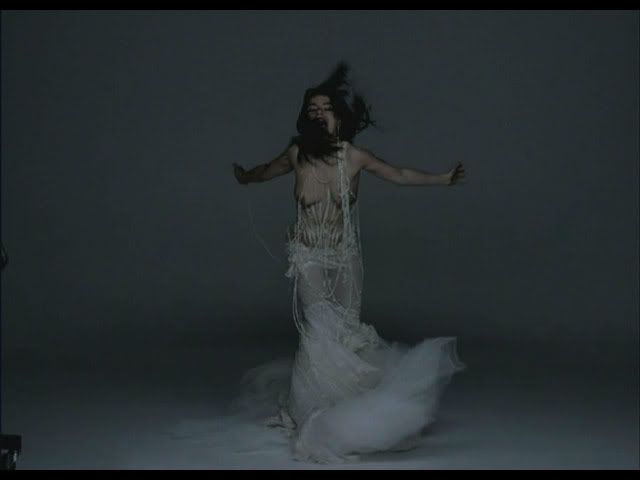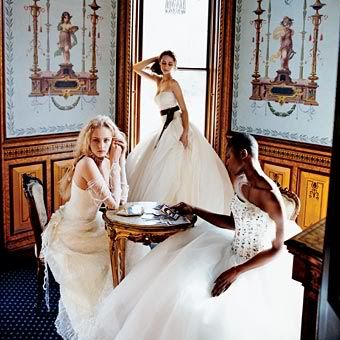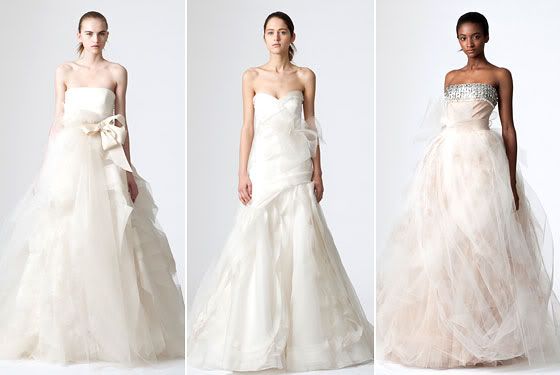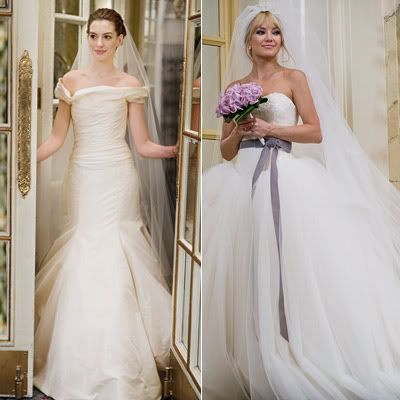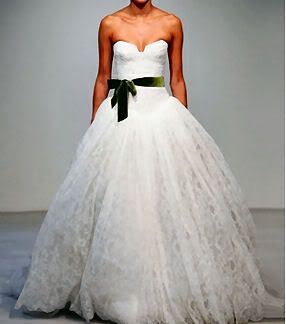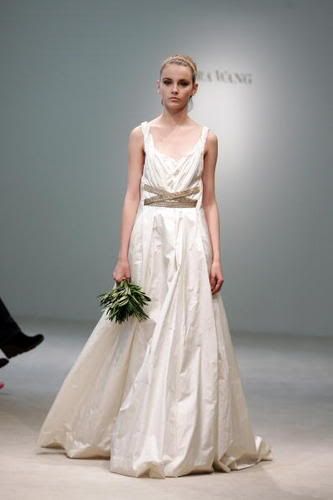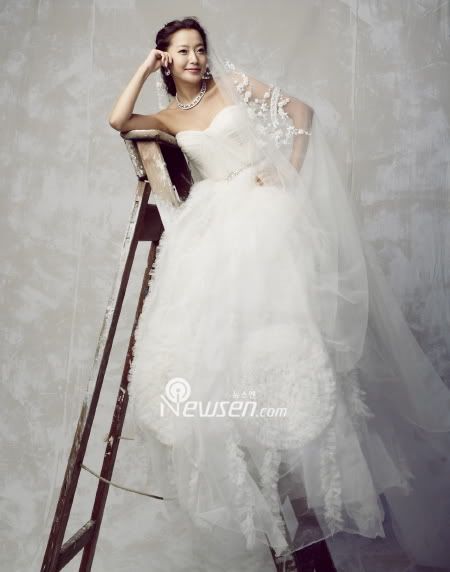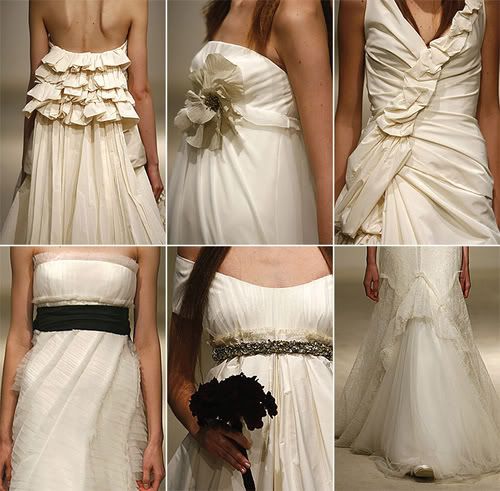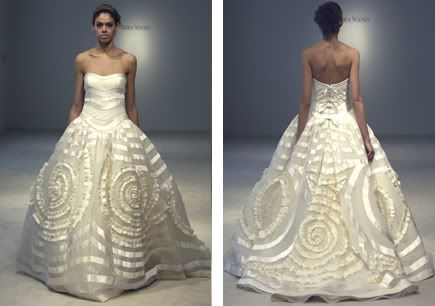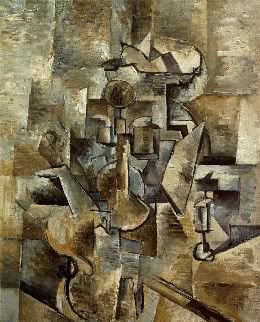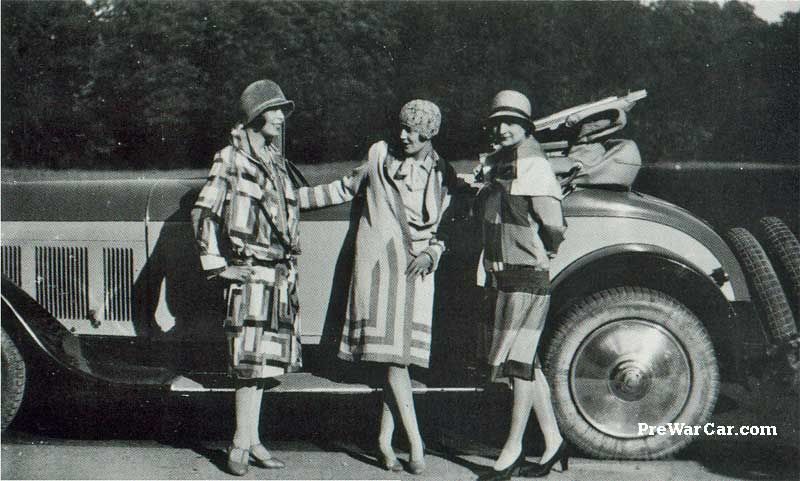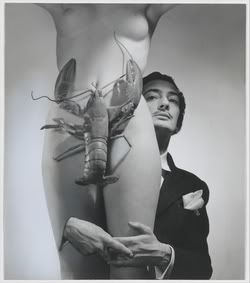What is your project about/what are you researching?Researching the difference between fashion and clothing; deconstructing the elements that create ‘clothing’, although retaining the non tangible elements that contribute to ‘fashion’ and creating a series of objects that are able to be placed onto the body. “A notion of fashion: the desire to identify the form of the garment with the anatomical perimeter, a tangency between inside and outside.” Double-Face.
I am also researching codes, particularly the very traditional code of bridal wear, because even today bridal wear is quite rigid and formal in structure and tradition, and therefore very strong in fashion information. "It is possible to isolate in fashion discourse certain residual codes that have been consolidated in the past; dominant codes which reflect the present adequately and emerging codes which imply new processes." Dysfashional.
I am researching how to deconstruct wedding dresses to create ‘objects’ which when joined together and applied to the body become clothing- although the individual objects are quite fashionable when related to bridal trends. “Cutting up and organising forms and figures, images and materials, on a surface and in space[...] changed one's manner of perceiving reality and constructing a new existence.” Double-Face. The shadow aspect of the studio in my project refers to the codes of the wedding dress that have been reinterpreted into a new form. “Fashion is an intangible object. Fashion is not a material product but a symbolic product which has no content substance by/in itself.” Fashionology
I am researching the difference between: Clothing and objects: whether you can create a fashionable object which, once applied to the body, can become clothing. If the objects are joined together on the body are they more fashionable or traditional in their original codes they are referencing? If the objects are not on the body do you read them as objects or clothing or fashion?
What outcomes do you have in mind?I hope to break the codes of modern bridal wear and create a series of prototypes made from bridal objects that interact with each other in different ways in terms of construction. More specifically; I plan to create objects that are laced or studded or buttoned together by the wearer to create their own wedding dress of their dreams- using aesthetic elements of traditional bridal fabrication but non traditional pattern making or garment construction. “[The cut] severs the garment as the simple container and portrait of the human figure and transforms it into a creative act, a language that builds new objects.” Double-Face.
Also I would like to create a book to go with these garments, a 2d folio, a blog, a video informing the wearer or different ways to ‘put on’ the garments/objects and do a photoshoot that mimics traditional bridal photoshoots so that the garments are easily read to break the codes of wedding dresses. .
How are you going to go about making the project?Experimentation, I plan to present my process rather than completely refined garments, and therefore hope to make my project very organically. From an original research into what constitutes a garment (I will interview peers), and what are codes of bridal wear; and therefore the fashion. I will make my project by also experimenting with objects as garments, focusing particularly on natural objects (as a reference to Double-face reading) and the mimic these experiments aesthetically with the bridal fashion traditions to create deconstructed pattern making and garment construction.
Who are some of the artists/designers who relate to your project and why?Vera Wang- the pioneer designer in today’s wedding ‘fashions’ who creates the codes of bridal dress for women of this era.
Nicola Formichetti- a stylist who uses experimental materials to create clothing and fashion looks; in particular his work with objects as clothing.
Martin Margiela- a fashion designer who uses non-traditional materials frequently to create fashionable garments such as jackets made from soccer balls.
Cubists & futurists- ie Picasso & Braque & Sonia Delaunay; their non-traditional ways of expression and methods of abstraction in art can easily be transferred to design processes in fashion. “The Cubists were the first to cut out images, disarranging and rearranging them in order to forge new relationships with the object seen and experienced.” Double-Face.
Timeline- plan of how you will be spending your time over the next 7 weeks.Week 8- Random sourcing of objects and documentation, also research into other artists
Week-9- Experimentation of found objects & creation of garment definition rules
Week 10- Refined design for garments through experimentation and fabrication research
Week 11- Cutting/Sewing Garments
Week 12- Cutting/Sewing Garments
Week 14- Compilation of research into video, book & poster formats
Week 15- Presentation















